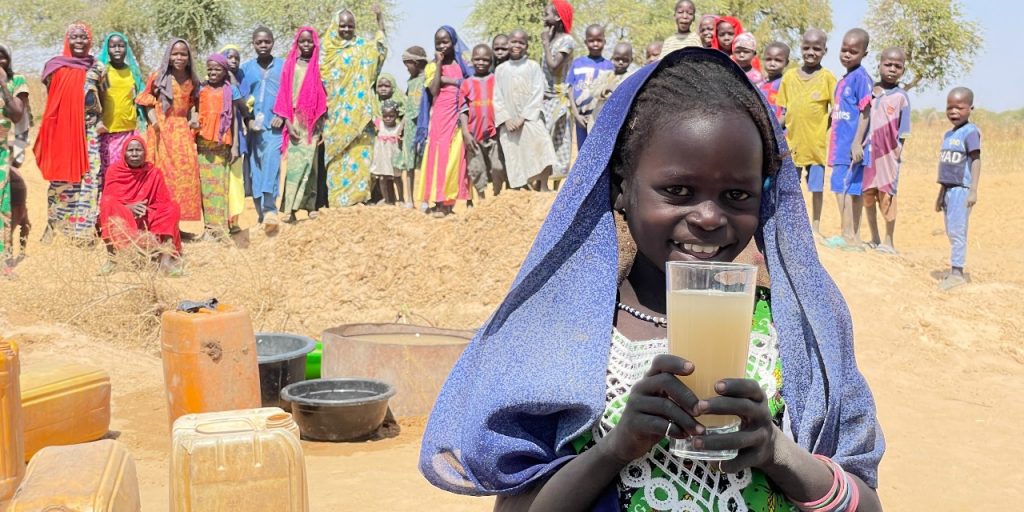Waterborne diseases are a leading cause of death worldwide. In 2019, more than 2 million people died from waterborne illness, including more than 1.6 million people who died from diarrhea and its related diseases. Diarrhea is also the second-leading cause of death for children under the age of 5, with an annual death toll of more than 500,000.
The vast majority of these diseases are caused by contact with or consumption of water contaminated by bacteria, viruses, or parasites. The World Health Organization estimates that 1.8 billion people on Earth get their drinking water from a source contaminated with human and animal waste.
Some of the most common issues from drinking contaminated water include:
- Diarrhea: An intestinal infection characterized by watery stools, diarrhea is a common ailment around the world. But in areas of the world without clean water, it can be deadly. Diarrhea involves a rapid loss of fluid from the body. Without the clean drinking water to replace those fluids, the body can become seriously dehydrated, leading to serious health issues, up to and including death. Young children are particularly susceptible to serious consequences from diarrhea if untreated.
- Dysentery: An intestinal infection whose defining feature is the passing of blood or mucus in stool. Similarly to diarrhea, it is an easily treatable disease in areas with abundant clean water. But in areas lacking clean water, extreme dehydration caused by the disease is a risk multiplier that can result in serious health complications.
- Cholera: An intestinal infection whose symptoms include diarrhea, vomiting, leg cramps, and, in more serious cases, rapid dehydration and shock. Mostly eradicated by industrialized countries over 100 years ago, this disease continues to exist in developing countries that lack robust clean water infrastructure. An estimated 1.3 to 4 million cases of cholera occur each year, resulting in as many as 143,000 deaths, according to the World Health Organization.
- Typhoid: A highly transmittable bacterial disease causing a number of symptoms including high fevers, malaise, headaches, constipation or diarrhea. An estimated 20 million cases of typhoid are reported each year, with an average of 200,000 people dying from the disease.
- Schistosomiasis: A disease caused by parasitic worms found in contaminated drinking water. Affecting mostly poorer and rural communities in Africa, South America, the Caribbean, Asia and the Middle East, this disease is characterized by symptoms including abdominal pain, diarrhea, and blood in the stool or urine. Kidney and liver damage are also caused by the disease, which is believed to kill 200,000 people per year. In 2015, more than 66 million people were treated for schistosomiasis.
Waterborne illness is particularly an issue in sub-Saharan Africa, where more than 300 million people do not have a source of drinking water that is both accessible and clean. Many people in this part of the world must drink water that has been acquired through significant physical labor – daily journeys, on foot, averaging six kilometers a day while carrying 70 pounds of water.
Many others instead source their drinking water from unprotected, untreated sources like rivers, lakes, ponds, and open watering holes. People in this situation risk their health and wellbeing every day, every time they drink a glass of water. And most importantly, these risks are entirely preventable.
Solving this crisis and eradicating waterborne illnesses in Africa is a significant challenge, one that requires investment in infrastructure. That infrastructure must tap into Africa’s vast reserves of groundwater and be able to supply entire communities of people. But it also must be sustainable and easily maintainable, providing a lasting source of clean water for years to come.
Help Embrace Relief deliver clean water to people who need it
At Embrace Relief, our solution is to invest in the building of hundreds of water wells. We’ve made incredible progress already, providing clean water to more than 500,000 people in the African nations of Cameroon, Chad, and Nigeria.
Through our Clean Water Initiative, we have funded the construction of 450 new water wells in those countries. And through our recently launched “Fountains of Hope” project, we’ve reconstructed 50 abandoned or non-functioning wells.
To aid more people, we need your help.
Donating to Embrace Relief’s Clean Water Fund and our “Fountains of Hope” project is the single-best way to ensure that thousands of people will get the water they need.
But there are more ways for you to help Embrace Relief fight the clean water crisis. On Saturday, June 25, we will be hosting our inaugural H2Ow Far Can You Walk: 5K Walkathon at Liberty State Park in New Jersey. This family-friendly event is open to people of all ages and abilities, and will help raise awareness and money for building and rebuilding water wells in Africa.
Every dollar donated during our 5K Walkathon will provide more than 2,000 gallons of clean, drinkable water for those in need. For more information, and to register, click here. We look forward to having some fun in the sun with you as we help improve hundreds of thousands of lives.

